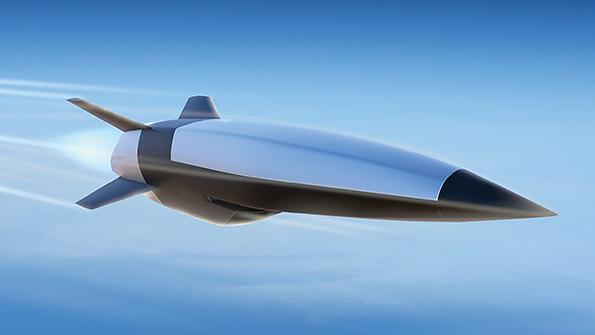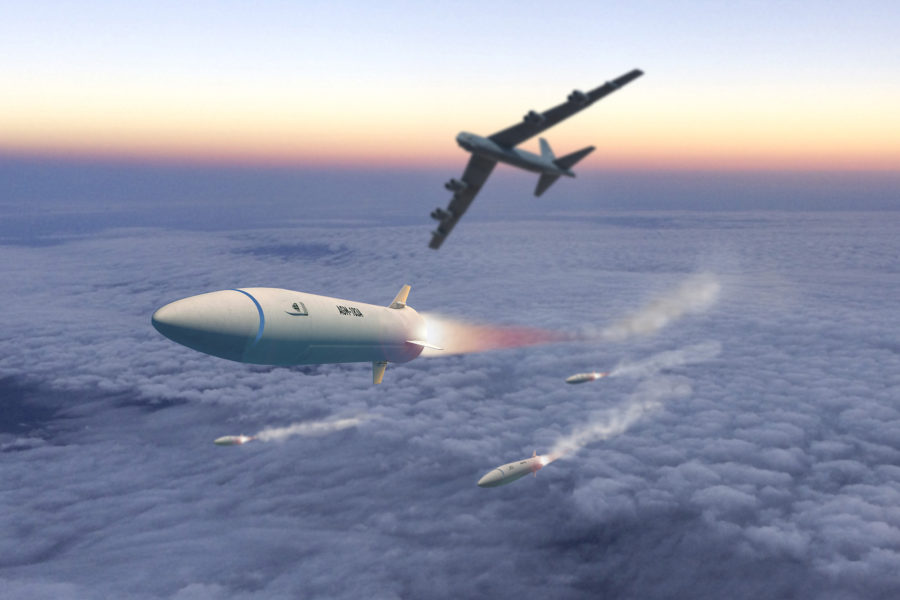The Air Force Research Laboratory is shifting its hypersonics efforts away from missiles and toward reusable platforms optimized for reconnaissance and strike, Lt. Gen. Dale White, USAF’s uniformed deputy to the service acquisition executive, told the House Armed Service Committee on March 12.
White also said the AGM-183A Air-Launched Rapid Response Weapon (ARRW), built by Lockheed Martin, will soon conclude testing with no follow-on production currently requested, and that the Hypersonic Attack Cruise Missile (HACM), to be built by Raytheon, will enter flight tests next year.
“The focus of the Air Force Research Laboratory Technology development efforts will shift to less-mature technologies that are needed to develop future reusable hypersonic platforms, which will provide multimission intelligence, surveillance, and reconnaissance, as well as strike capabilities,” White said at a hearing on the Defense Department’s various hypersonic weapon efforts. Due to classification, the hearing adjourned to resume in a classified facility.
White gave no timetable for development of a reusable hypersonic platform, but AFRL officials have previously forecast that such technologies could be available for operational use in the early 2030s.
The AFRL is coming off a run of “many enduring contributions to the field of hypersonics,” with “significant successes with their recently-completed High-Speed Strike Weapon technology maturation program,” White said.
The HSSW “transitioned over 30 technologies to various DOD hypersonic programs ranging from advanced materials to propulsion technologies to vehicle designs,” White reported.
“Based on these successes, we look forward to the launch of [technology maturation] to further develop and transition technologies for next-generation hypersonic capabilities in fiscal year 2025.”
It wasn’t clear if White was referring to the HACM, but he said testing of the air-breathing HACM will take place in 2025.
“The Air Force awarded the HACM contract in September of 2022 and is developing the weapon using the middle-tier acquisition rapid prototyping authority,” White said. “We are working to mature HACM to critical design, along with other development activities to enable the flight test activities in fiscal year 2025.”
These efforts “to develop and field an operational hypersonic air-launched weapon will enable us to hold high-value, time-sensitive targets at risk in contested environments from standoff distances,” White said. “A hypersonic weapon, in concert with a wider weapons force mix, is key to providing a war-winning Air Force.”
The ARRW is “undergoing the final test of the all-up round with a planned test program completion by the end of second quarter fiscal year 2024,” White added.
Images of an all-up ARRW missile at Andersen Air Force Base, Guam, were published last week by the Air Force, which said B-52 flight and ground crews were receiving “familiarization training” with the weapon there. Notices to Airmen and the positioning of test apparatus in the vicinity of the Kwajalein test area suggested that the final test flight of the ARRW in the Pacific was imminent.
“This test will launch a full prototype of the operational hypersonic missile and is focused on the ARRW’s end-to-end performance,” White told lawmakers.
The Air Force has been cagey about what it plans to do next with ARRW. Although service acquisition executive Andrew Hunter said definitively last year that ARRW would not be pursued into production after the test effort concludes, service officials briefing on the fiscal 2025 budget this week have said the Air Force will look at the results of the final test and then decide what to do.
“Future ARRW decisions are pending final analysis of all flight test data,” White said in the hearing.
“We do not have the ARRW in the ‘25 budget book,” he added. “However, we are continuing to analyze the test data that we have from that that capability.” He also said the Air Force is “pleased to report that the ARRW rapid prototyping program has been a categorical success to date,” despite mixed results from its flight test program, which resulted in several test failures. The most recent tests have been reported as successes.
Air Force budget documents indicate the service wants to invest $517 million in research, development, test, and evaluation for HACM in fiscal 2025, with planned investment of more than $1 billion through 2029. However, its funding profile declines every year through ’29, which is described as the development completion date.

The HACM funding profile in the RDT&E accounts calls for:
- 2025: $516.97 million
- 2026: $448.55 million
- 2027: $274.10 million
- 2028: $200.83 million
- 2029: $202.59 million
However, there is no money to procure HACM in Air Force budget documents, even though a typical program would already be laying in long-lead money for procurement. The Air Force spent $387.3 million on HACM in fiscal 2023 and requested $381.5 million for it in fiscal 2024.
The Air Force was not immediately able to comment on planned HACM procurement funding.
